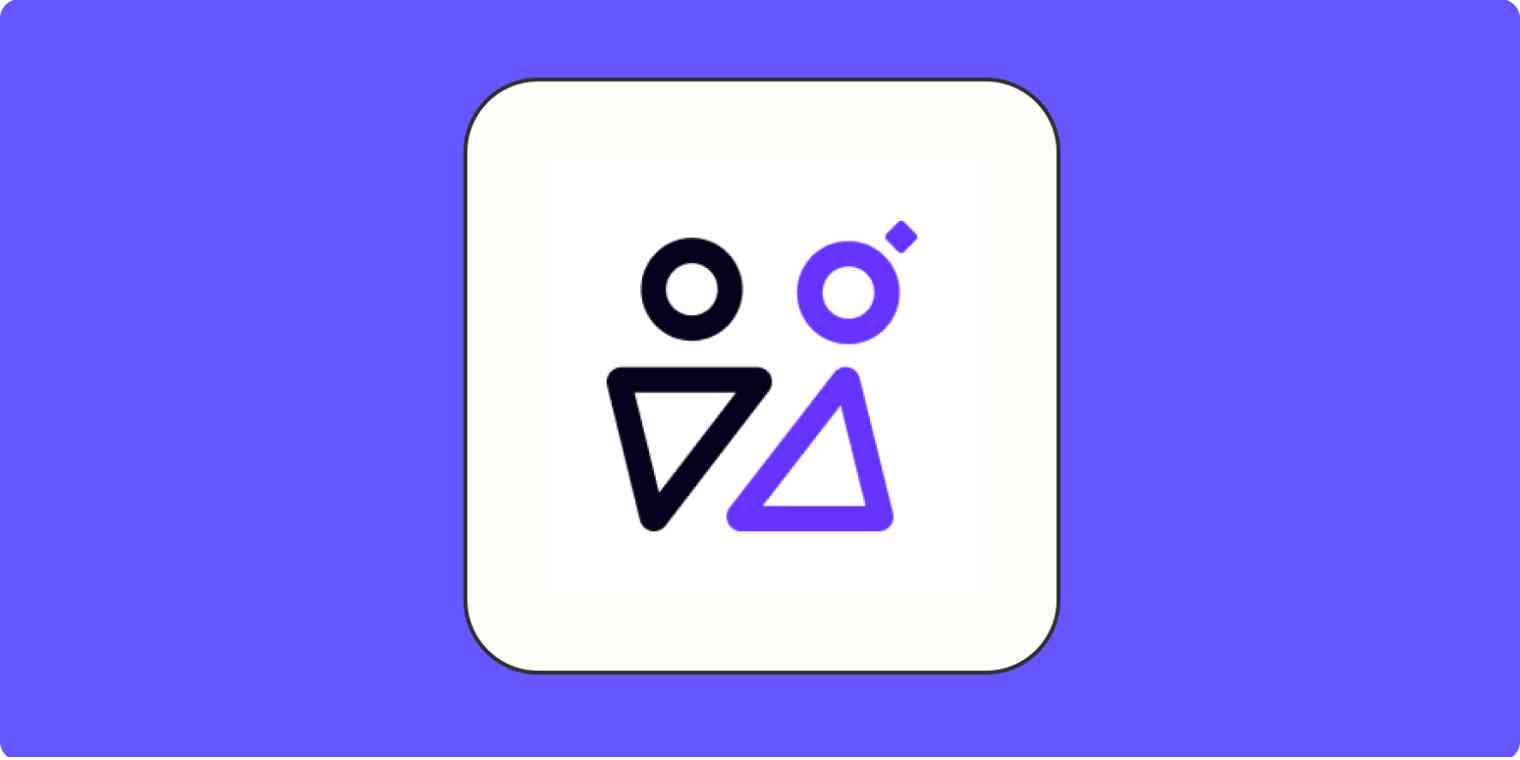We're blazing through information faster than ever before. While there are viable knowledge management techniques—such as building yourself a second brain—sticking to a framework takes time you don't have. How do you keep track of what you learn? And how do you communicate that effectively?
Personal AI is building an answer to these questions. It lets you train your own artificial intelligence (AI) model, so you can organize and share your work and life in a more in-depth way. Once your model has trained for long enough, you can even use it to assist you in messaging others, creating content, and remembering important information—and it starts to sound a lot like you.
I've been training my own personal AI model over the past few weeks. If you want to join in, hop on the early access phase. Here are the highlights of the experience so far.
What is Personal AI?
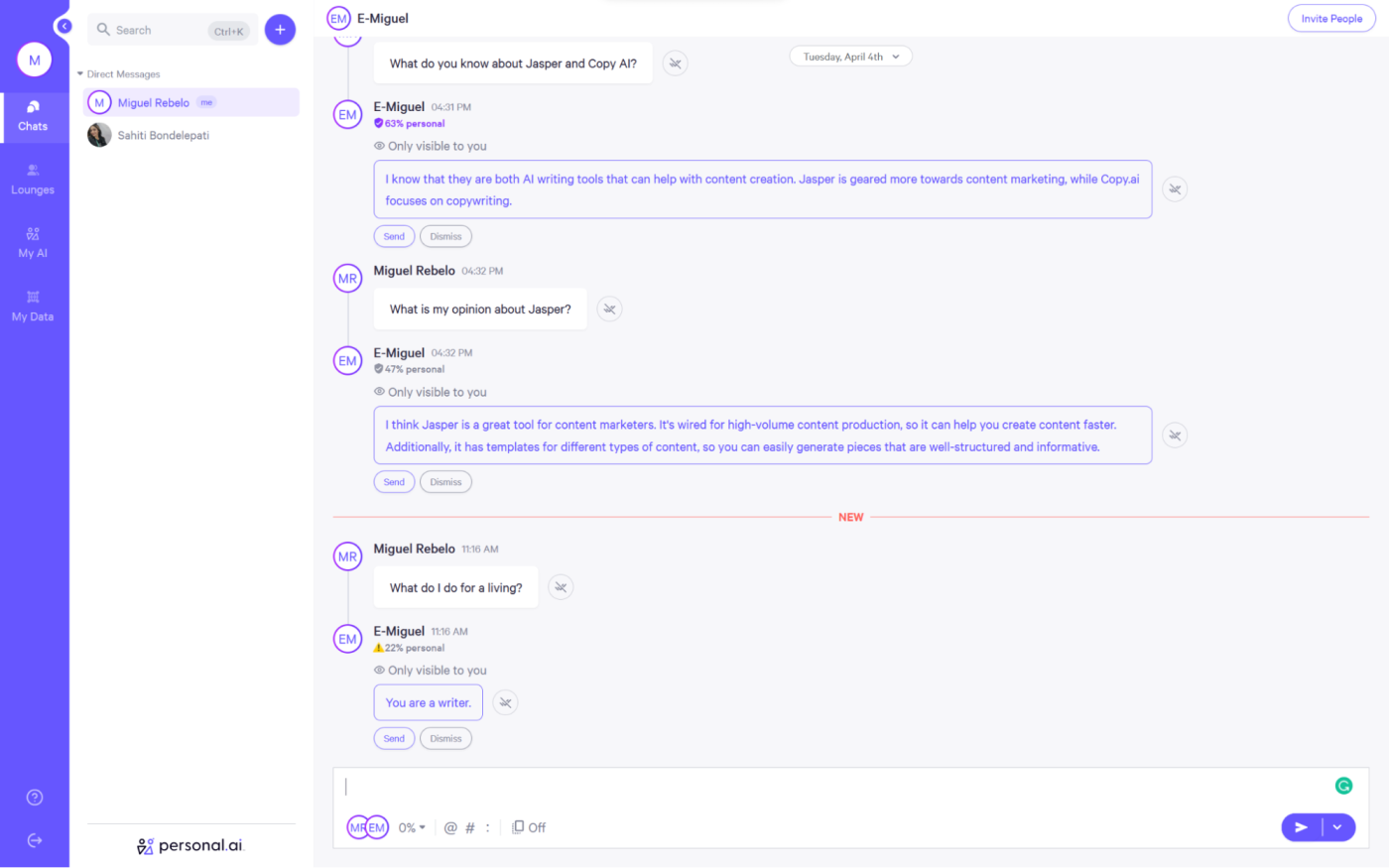
Personal AI empowers you with your own personal AI model. Once you create your account, you can name it and give it a profile picture—you know, so you can distinguish human-you from AI-you.
With that identity in place, you start training your own AI model simply by chatting with it. As you do so, the app will start stacking memories that it will use to suggest responses when you're messaging someone else—or writing a tweet or blog post. The more you chat with your personal AI, the more it learns and adapts to your personal style.
Chatting all day to train your model sounds fun, but also, you have other things to do (I hope). That's why Personal.ai integrates with plenty of apps to bring all your data into the platform. As it processes all that information, it'll start making even more relevant and intelligent suggestions. Once you're confident it represents your knowledge and communication style, you can turn on AI Autopilot, letting people talk with your AI model without your direct intervention.
The use cases for the app may not be immediately obvious. But if you're investing a lot of time in customer support, answering client questions, or managing new hires, training an AI model that answers questions could help you take back quite a bit of your schedule every week.
Since Personal AI demands so much data from you, it makes sense to be concerned about your privacy. Your data isn't stored in a traditional data center—instead, it's in the privacy-first Oasis Network, leveraging blockchain technology to keep your data secure. But it's always a good idea to do some digging before you give your entire life over to an app.
Training your personal AI model
Ok, so you've got your fresh Personal AI account. Right now, your model knows nothing about you. You have to train it by chatting and providing more information about yourself. When you send the first messages, it will recognize them like so:
Statements, which are usually declarative sentences that end with a period, are a good candidate to create a memory.
Questions are read as requests, and the model will respond by trying to fulfill them as best as it can.
It will ignore any chatter and filler words to keep your memory stack clean.
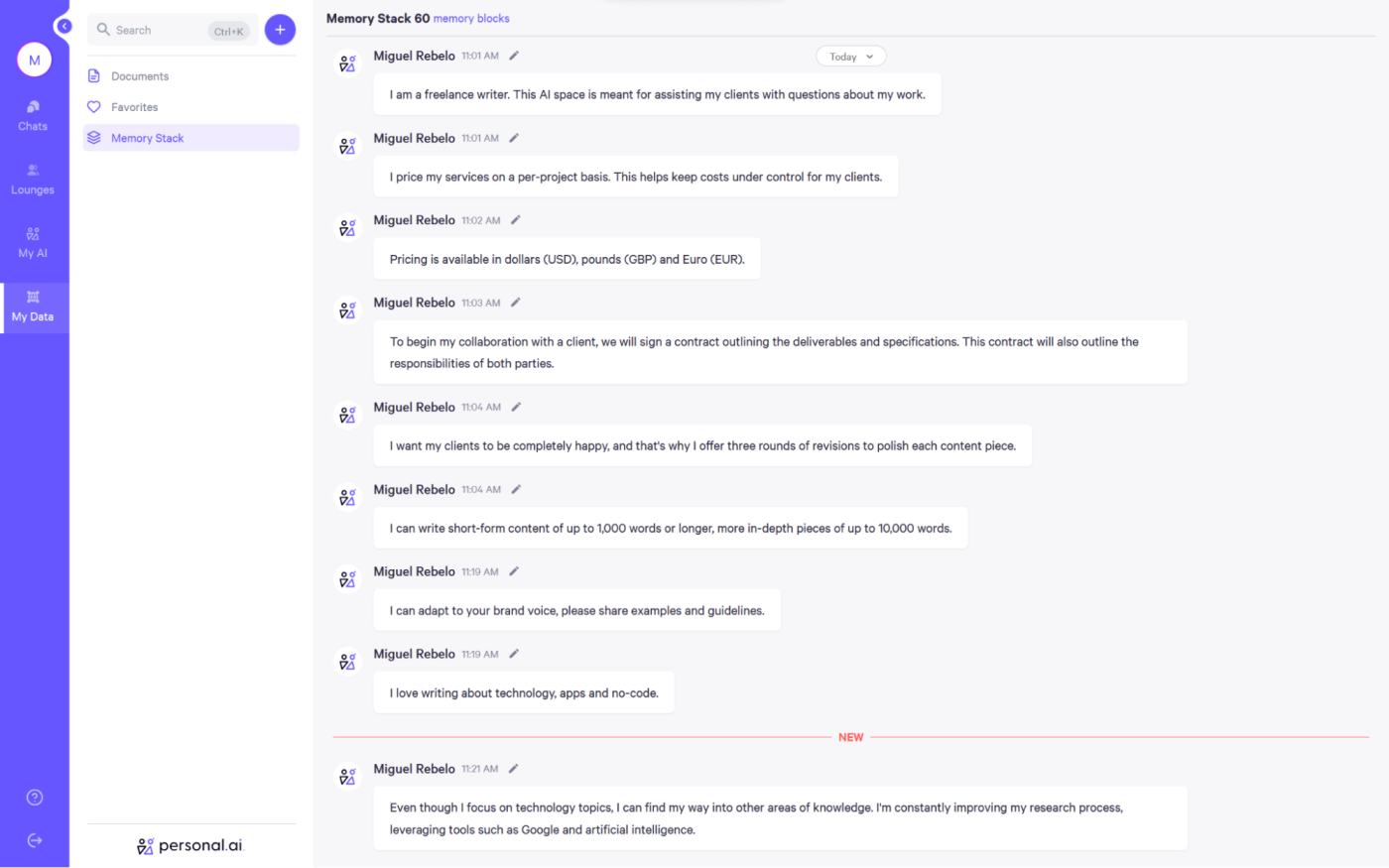
This information is processed by a proprietary AI model called GGT—generative grounded transformer—which will keep learning to sound more and more like you. You'll notice that the app already gives fluent answers, even with just a little training. That's because Personal AI leverages GPT-3 to fill in the gaps. When you take a look at the Personal Score of each message, you can tell the exact weighting between your personal AI and GPT-3's general output.

As the conversation moves forward, the facts you're sharing are stored in a "memory stack" (you can click My Data > Memory Stack to see what's being recorded). And text is just one of many things you can add: you can also add links and images, so they can be used as references later.
GPT didn't reach its current level of quality in a few weeks; and even though Personal AI's GGT model needs less data to be useful, it'll still take some time to achieve a high level of accuracy. So the best way to approach training is to think of it as a long-term task. Just as you're always learning and taking in new information, your AI model is doing the same with your data. It'll need a large amount before it can reliably take the wheel. But you'll be able to see baby steps along the way: I've only been training mine for three weeks, and I can already see how it's coming closer to sounding more like me.
Of course, we're always changing, and Personal AI's developers know that. The app has an automated base training system in place that slowly replaces earlier versions of your model with more up-to-date ones as you use it. This ensures that it won't be stuck in your current podcasting craze phase or your digital marketing deep dive period forever.
Create AI profiles by topic, use case, or relationship
Once you have a personal AI that's trained on your knowledge and style, you'll start wondering how to implement it. I had a few questions myself. How do you separate your personal and professional life? Will your personal AI spill the beans on your opinions about your personal life as it talks to your boss?
There are a few ways to control this. The first one is to create different AI profiles for different areas of your life. These AI profiles work as if your cloud folders had a chat window where you could drop information and retrieve it through conversation. You add relevant information to each of these profiles, and it's stored there. Later, when you talk to each of these AI profiles, it will reply, prioritizing the information you've entered before, keeping itself on topic.
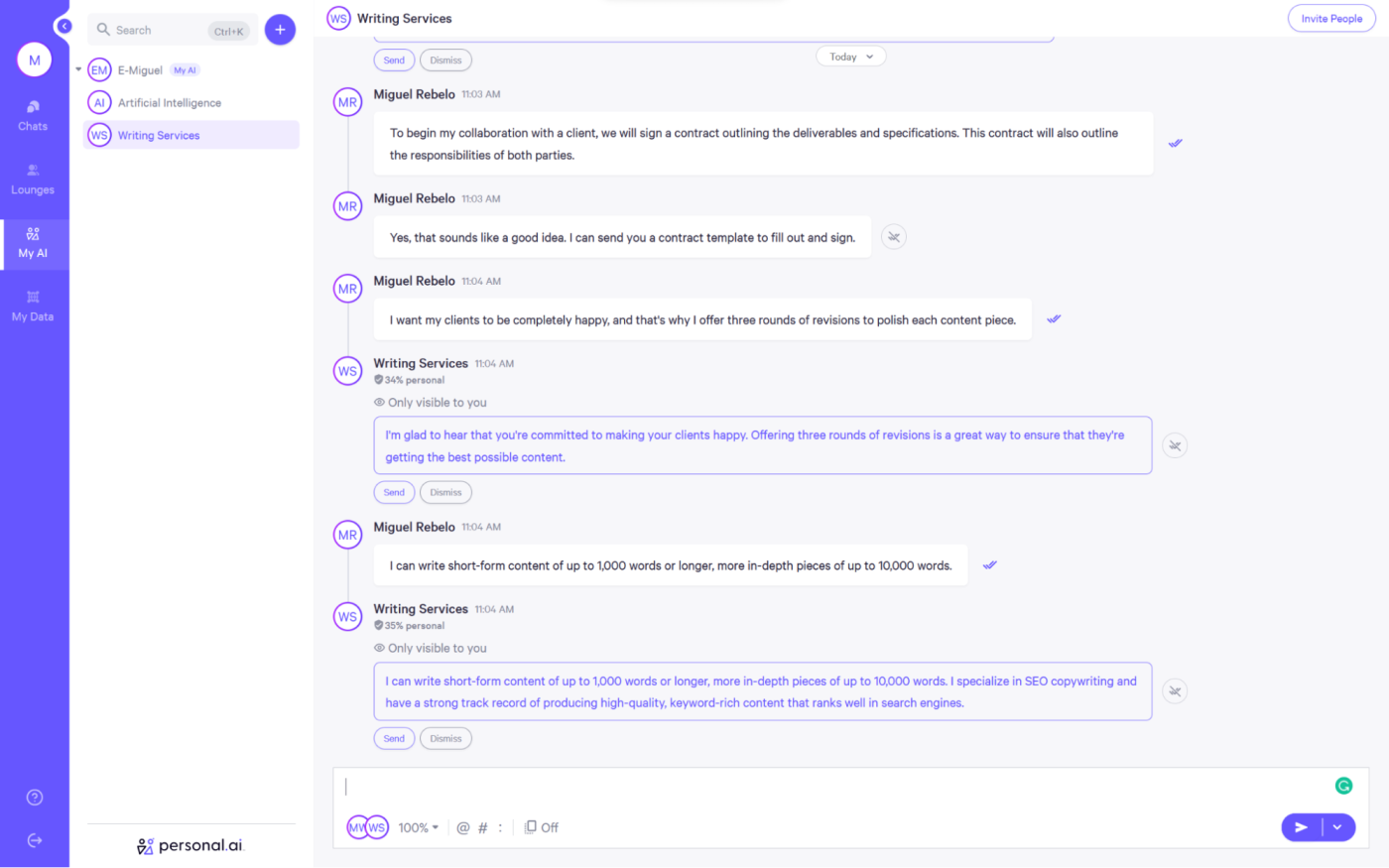
The second control in place is the Personal Score Threshold: you can adjust a slider to determine how much your personal AI will use personal data in its suggestions and replies. A lower percentage will give less personalized answers (mixing in more GPT output); higher percentages will bring out more from your personal AI model. This prevents your model from going on an off-topic, too-much-information tour.
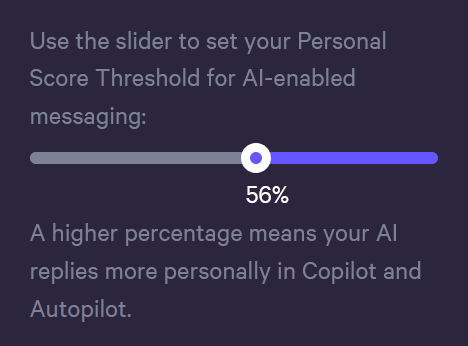
I started training an AI profile with information on how I run my writing services: how I do pricing, how a project goes from start to finish, and what clients can expect. A few days later, I went in to ask a few questions to test what happened. I was surprised to see that, in addition to giving accurate information—and giving general, non-committing answers when it had no source data—it was roughly mimicking the way I write. Considering I didn't invest a lot of time into it, I was impressed.
You can create AI profiles for topics (e.g., artificial intelligence, jogging tips, or design), for tasks you have to do (e.g., creating budgets or quotes), or for information about your business. Later, you can come back and ask questions to retrieve that data, or direct people to this profile and have them explore what you know through chat.
What to do with your personal AI
If you just look at Personal AI's landing page, you might think that the main focus is personal relationships. And you can absolutely train an AI profile on everything that makes you you and then share it with your friends and family to stay more connected.
But there are also plenty of use cases where Personal AI can be used as a productivity or business tool. One of those is the one I described above: training an AI profile on your service details, so it can one day serve as a chatbot. Here are a few other ideas:
You could use your company's onboarding materials to create an AI profile. Then, you could share it with new hires, so they could ask questions and get the information they want.
You could add product details and frequently asked questions to another AI profile. Your clients could ask anything about it and have an answer right there, with your brand voice to boot.
If you're an influencer, you could create another AI profile to interact with your fans, adding interesting facts about your life and work so people could have a conversation with you without you having to book 1-on-1s every day for the next decade.
There are two modes you can use to interact with others via Personal AI.
The first one is AI Copilot, where you'll see reply suggestions when others talk to you. If the suggestion fits, you can tap it and send it right away. If not, you can use it as a starting point. Once you send it, the app will pick it up and add it to your memory stack.
After a while, if you feel you're using almost all the suggestions, you can turn on AI Autopilot on a conversation-by-conversation basis. This will make Personal AI work like a chatbot when seen from the other side. Others will be able to ask questions and will get automatic replies without your intervention. This could be a great way to automate repetitive conversations or keep the conversation alive while you attend to other tasks.
Bring all your data in with Zapier
Since Personal AI thrives in a data-rich setting, it makes sense to bring as much information as possible into it—and if you can automate that, even better. By connecting Personal AI to Zapier, you can pull data in from any other app you use. Here are a few workflows you can set up to streamline the process on Zapier, helping you train your AI model without adding more hours to your day.
Create a new memory in Personal.ai whenever you add a new database item to Notion
Create a new memory in Personal.ai for new messages posted to a channel in Discord
Personal AI will take some time to read all the content you're connecting, but as it does, you'll see it starts incorporating more and more information.
Zapier is the leader in workflow automation—integrating with 6,000+ apps from partners like Google, Salesforce, and Microsoft. Use interfaces, data tables, and logic to build secure, automated systems for your business-critical workflows across your organization's technology stack. Learn more.
The AI-powered you
Feeling like we're in a sci-fi movie? Personal AI is a real thing. It's a great tool to store information, assist your memory, and help you chat with others without missing a beat. For personal uses, I imagine people will come up with fun things to do—I mean, wouldn't it be great to have my personal model talk to yours and see what happens?
At the time of writing, the app is still in early access, but all the features mentioned here are already implemented. There's also a collection of thorough help articles to guide you through setup and understanding the routines you'll have to create, so you have a base to start exploring. From that point on, keep feeding your AI model, and get ready for small, compounding surprises every now and again.
Related reading:
